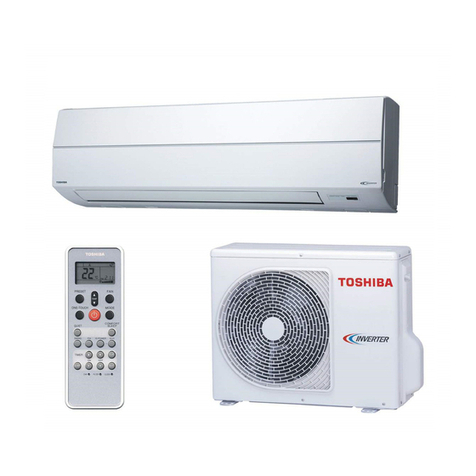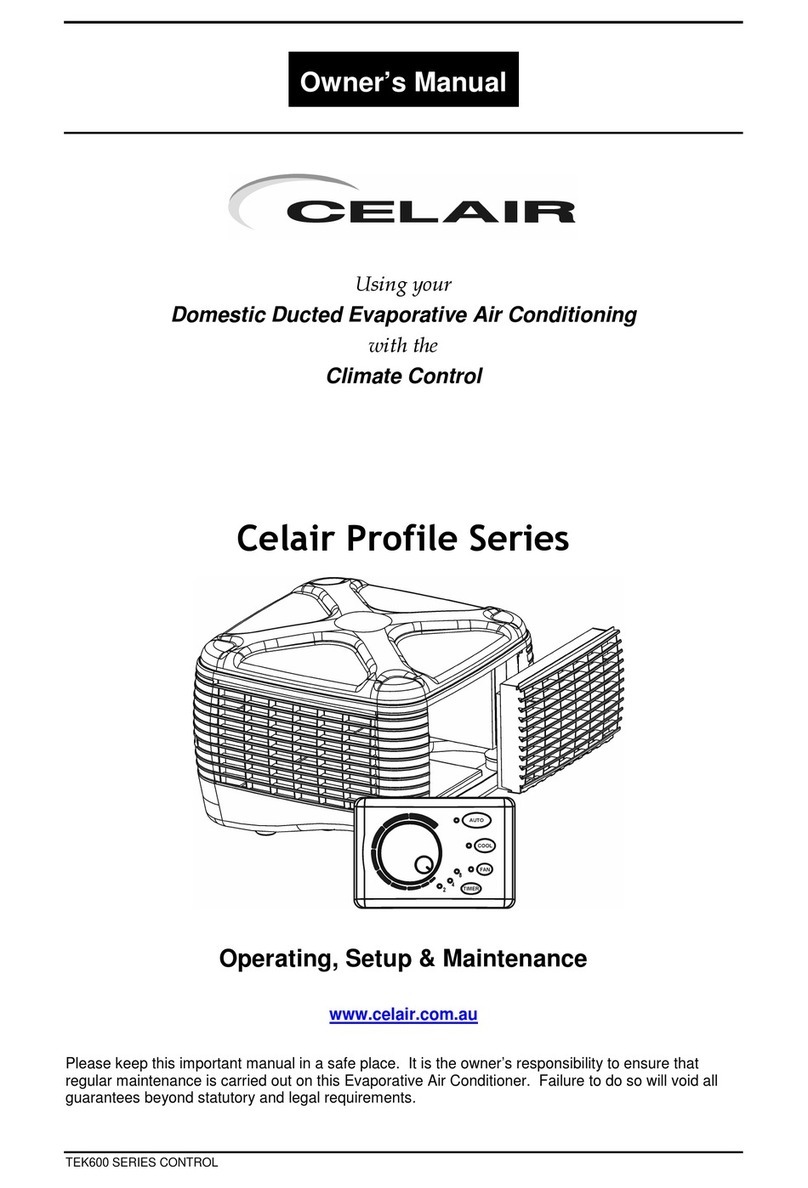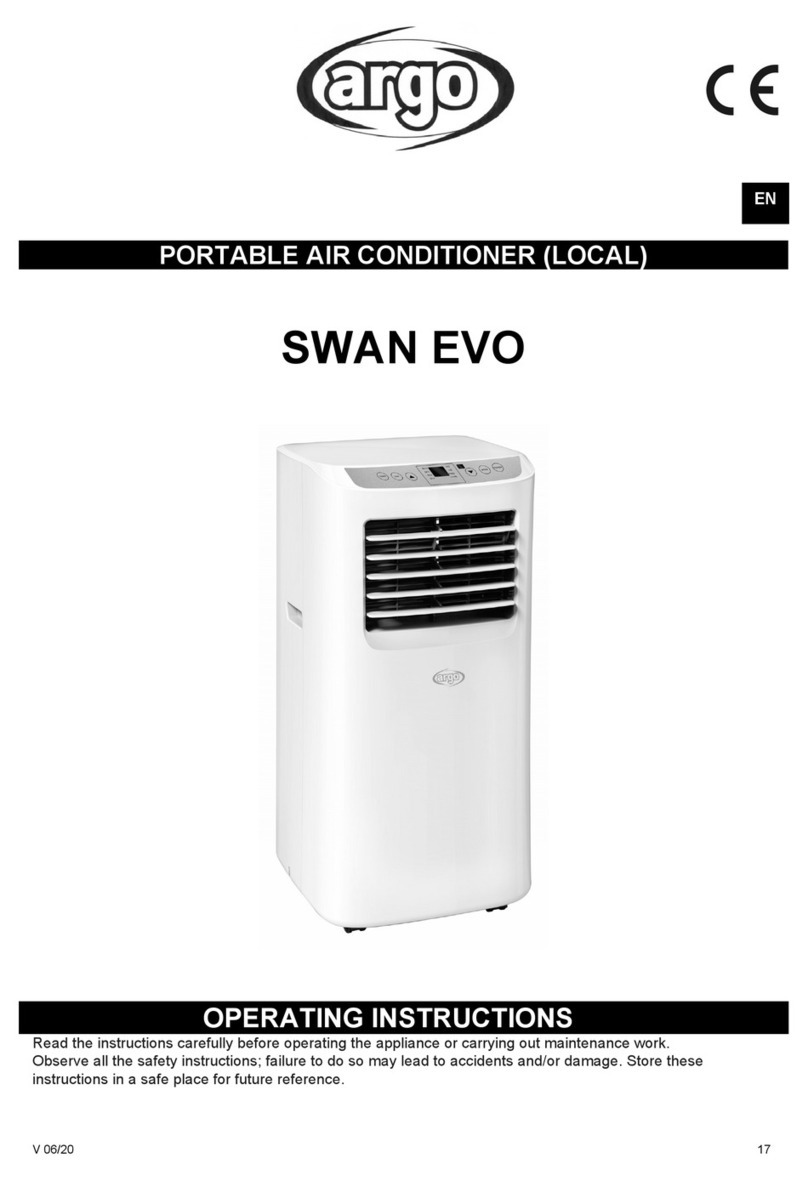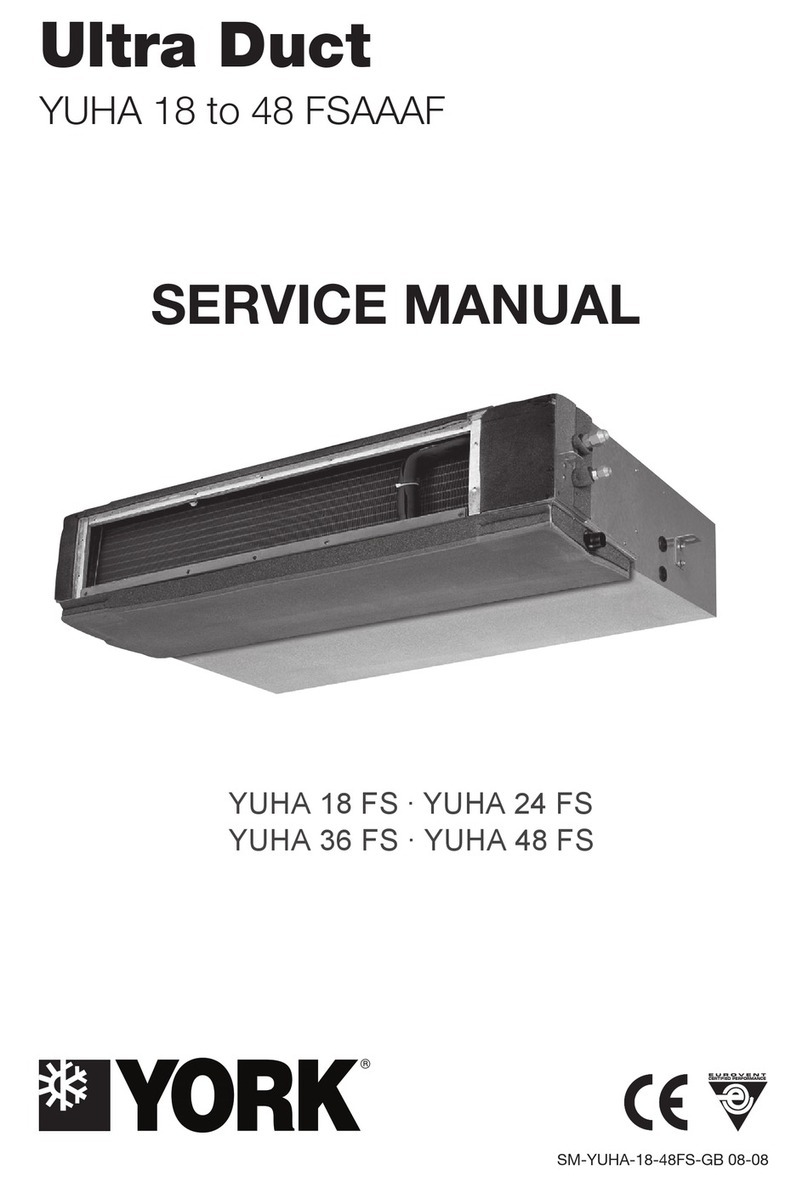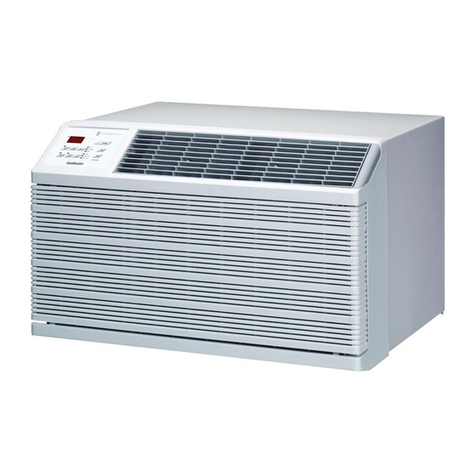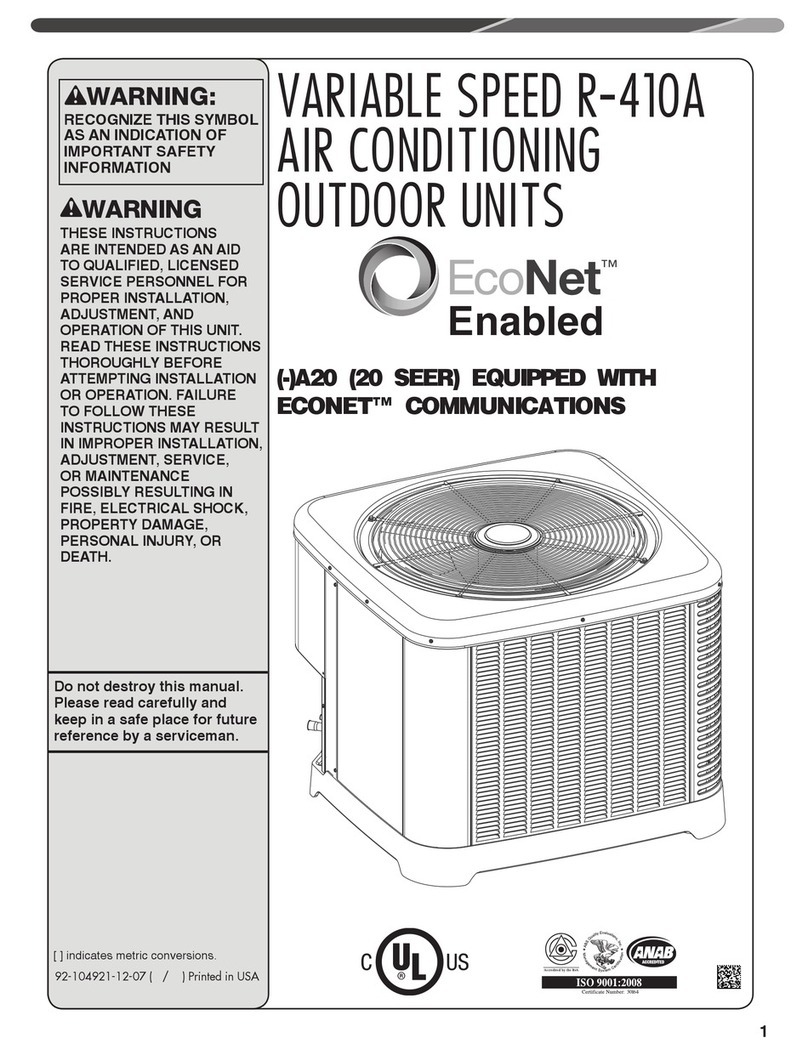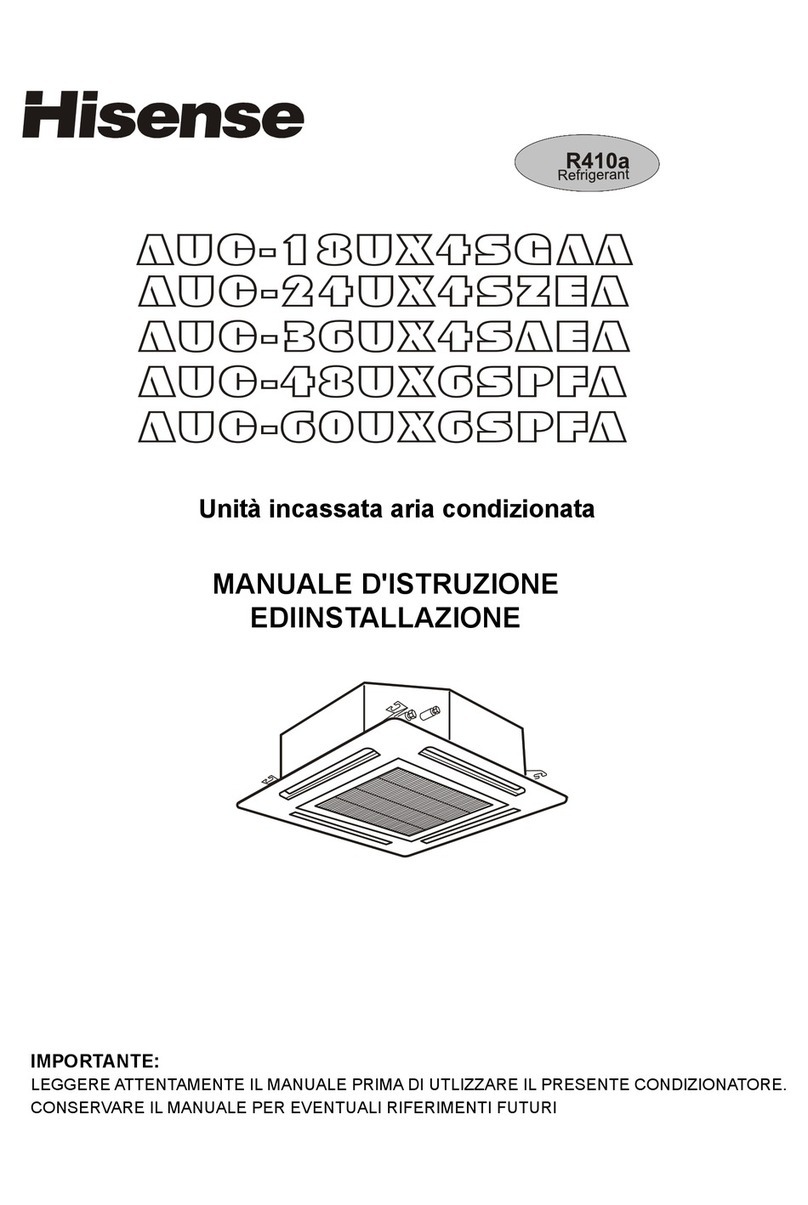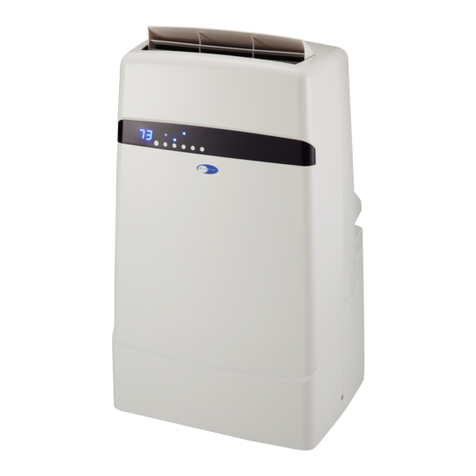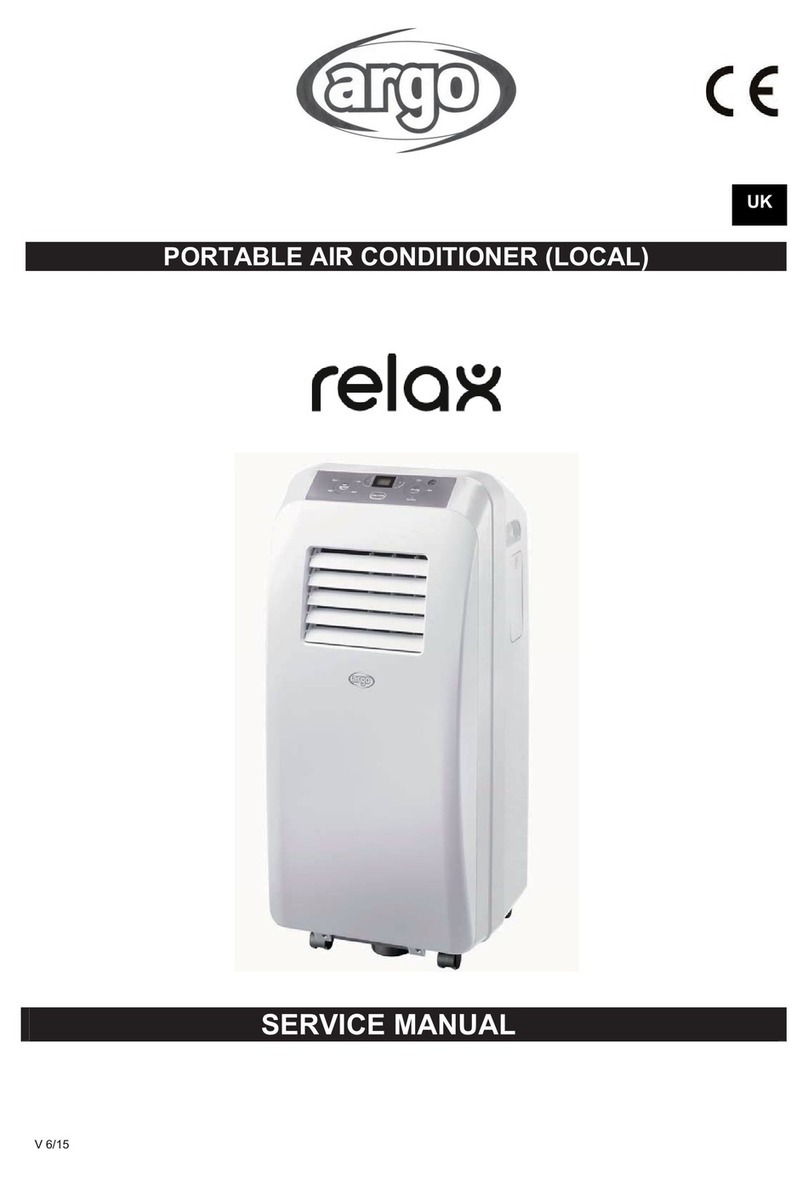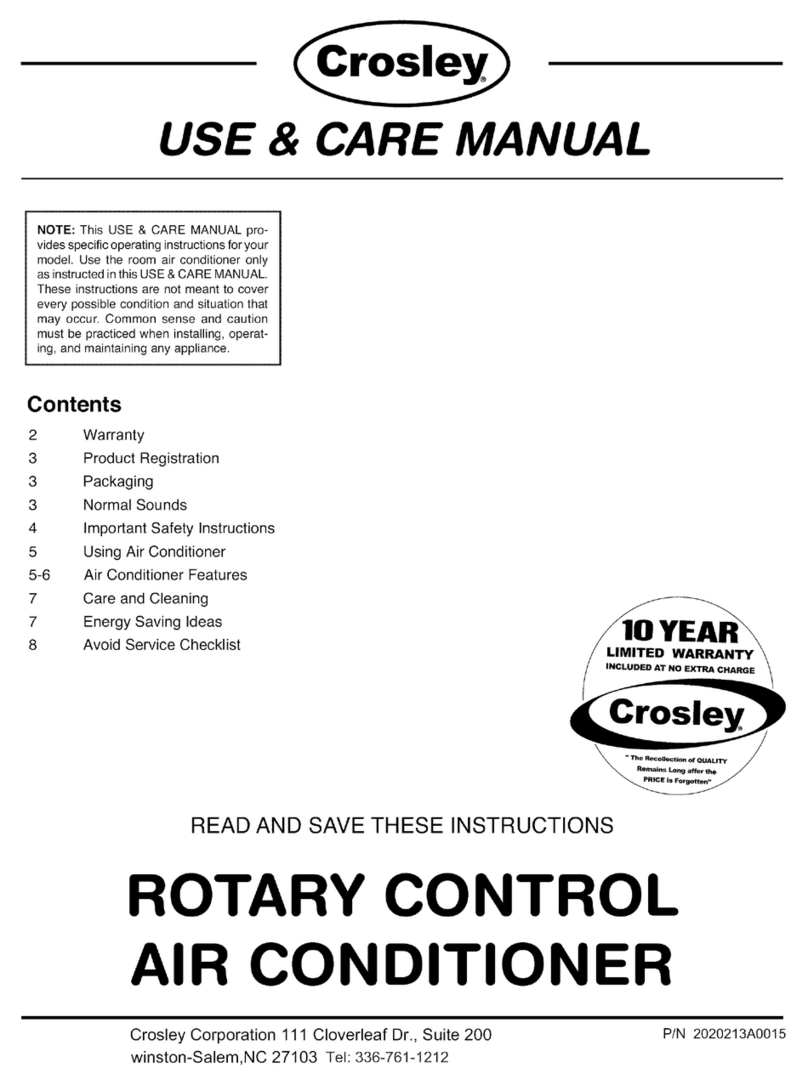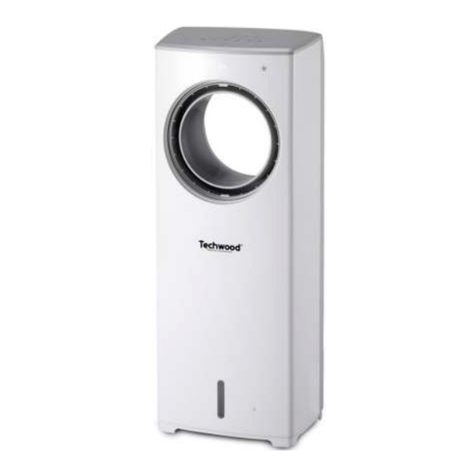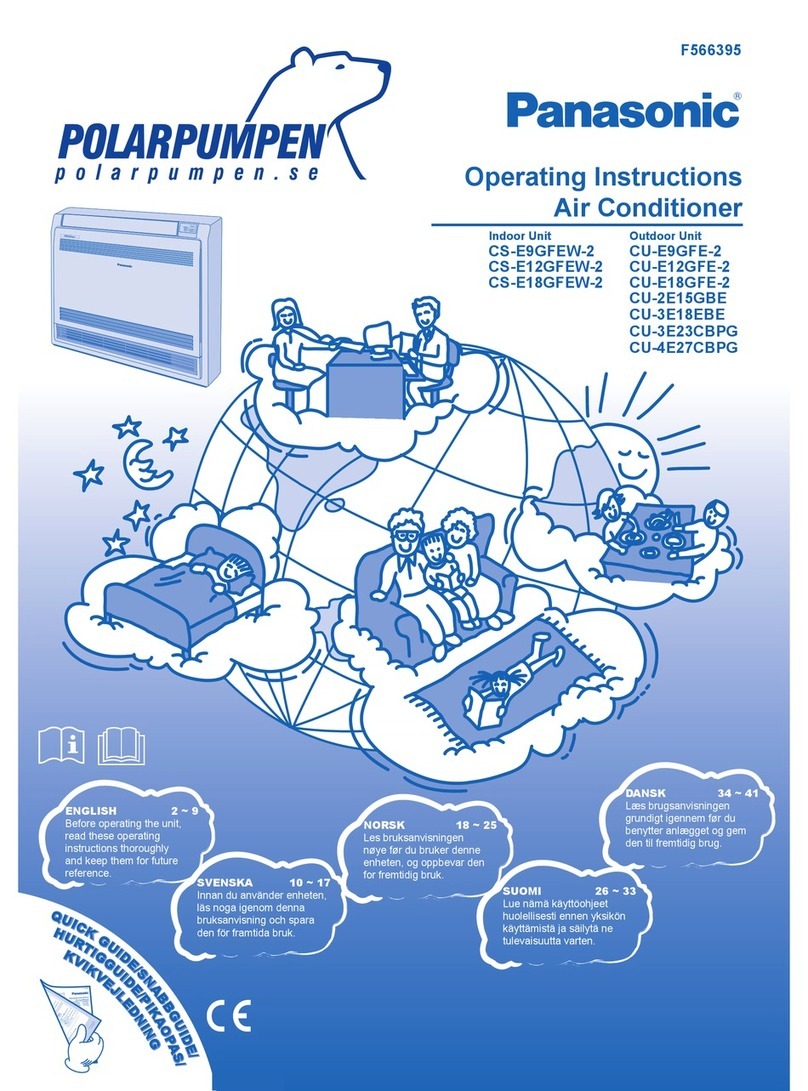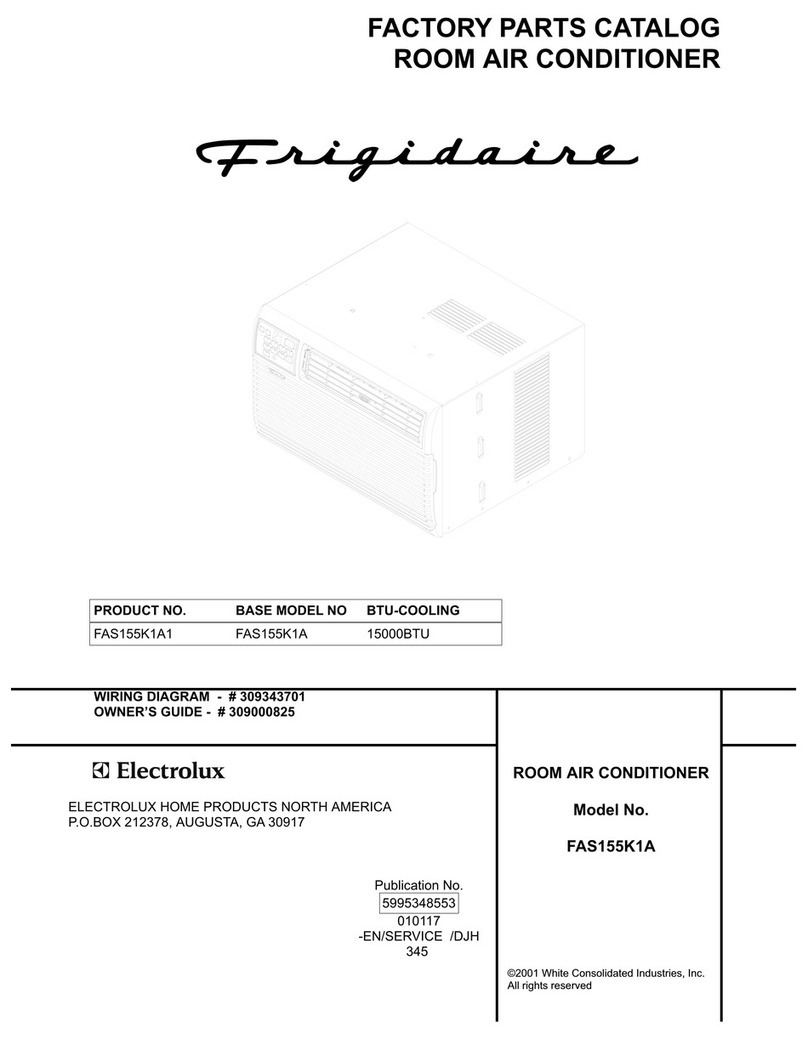Datacolor 9020-0129 User manual

Issue 06/2017 Art. No. 7001-0346
Operating Manual
Original operating manual
Datacolor CONDITIONER™
Sample conditioning cabinet
with display controller MB2
9020-0129, 9120-0129 without lights
9020-0190, 9120-0190 with lights

Datacolor CONDITIONER™ (MB2) 06/2017 page 2/126
Content
1. SAFETY..................................................................................................................6
1.1 Legal considerations...........................................................................................................................6
1.2 Structure of the safety instructions......................................................................................................6
1.2.1 Signal word panel......................................................................................................................6
1.2.2 Safety alert symbol....................................................................................................................7
1.2.3 Pictograms.................................................................................................................................7
1.2.4 Word message panel structure.................................................................................................8
1.3 Localization / position of safety labels on the cabinet.........................................................................8
1.4 Type plate ...........................................................................................................................................9
1.5 General safety instructions on installing and operating the cabinets ...............................................10
1.6 Intended use .....................................................................................................................................12
1.7 Operating instructions.......................................................................................................................12
1.8 Measures to prevent accidents.........................................................................................................13
1.9 Resistance of the humidity sensor against harmful substances.......................................................14
2. CABINET DESCRIPTION.....................................................................................15
2.1 Cabinet overview...............................................................................................................................16
2.2 Instrument panel ...............................................................................................................................17
2.3 Lateral control panel .........................................................................................................................17
2.4 Rear view with water connections ....................................................................................................18
3. COMPLETENESS OF DELIVERY, TRANSPORTATION, STORAGE, AND
INSTALLATION....................................................................................................19
3.1 Unpacking, and checking equipment and completeness of delivery................................................19
3.2 Guidelines for safe lifting and transportation ....................................................................................19
3.3 Storage..............................................................................................................................................20
3.4 Location of installation and ambient conditions................................................................................21
4. INSTALLATION AND CONNECTIONS................................................................22
4.1 Spacer for wall distance....................................................................................................................22
4.2 Wastewater connection.....................................................................................................................23
4.3 Freshwater supply.............................................................................................................................23
4.3.1 Automatic fresh water supply via water pipe...........................................................................24
4.3.2 Manual fresh water supply via external freshwater can (option).............................................26
4.4 Optional water treatment system BINDER Pure Aqua Service........................................................26
4.5 Optional external freshwater and wastewater cans..........................................................................26
4.5.1 Mounting the freshwater can...................................................................................................27
4.5.2 Mounting the wastewater can..................................................................................................28
4.5.3 Mounting with wastewater recycling........................................................................................29
4.6 Placement of the light cassettes (cabinet with lights).......................................................................30
4.7 Electrical connection.........................................................................................................................30
4.8 Connection of the optional voltage changer .....................................................................................31
5. FUNCTIONAL OVERVIEW OF THE MB2 CHAMBER CONTROLLER...............33
5.1 Operating functions in normal display...............................................................................................35
5.2 Display views: Normal display, program display, chart-recorder display .........................................36
5.3 Controller icons overview..................................................................................................................37
5.4 Operating modes...............................................................................................................................39
5.5 Controller menu structure .................................................................................................................40
5.5.1 Main menu...............................................................................................................................41
5.5.2 “Settings” submenu.................................................................................................................42
5.5.3 “Service” submenu..................................................................................................................42
5.6 Principle of controller entries.............................................................................................................43
5.7 Performance during and after power failures....................................................................................43
5.8 Performance when opening the door................................................................................................44

Datacolor CONDITIONER™ (MB2) 06/2017 page 3/126
6. START UP............................................................................................................44
6.1 Turning on the cabinet......................................................................................................................44
6.2 Controller settings upon start up.......................................................................................................44
6.3 Turning on/off humidity control..........................................................................................................45
7. SET-POINT ENTRY IN “FIXED VALUE” OPERATING MODE...........................46
7.1 Set-point entry for temperature, humidity, light intensity, and fan speed through the “Setpoints”
menu .................................................................................................................................................47
7.2 Direct setpoint entry for temperature, humidity, and light intensity via Normal display....................48
7.3 Special controller functions via operation lines.................................................................................48
8. TIMER PROGRAM: STOPWATCH FUNCTION ..................................................49
8.1 Starting a timer program...................................................................................................................49
8.1.1 Performance during program delay time.................................................................................49
8.2 Stopping a running timer program....................................................................................................50
8.2.1 Pausing a running timer program............................................................................................50
8.2.2 Cancelling a running timer program........................................................................................50
8.3 Performance after the end of the program........................................................................................50
9. TIME PROGRAMS...............................................................................................51
9.1 Starting an existing time program.....................................................................................................51
9.1.1 Performance during program delay time.................................................................................52
9.2 Stopping a running time program......................................................................................................52
9.2.1 Pausing a running time program.............................................................................................52
9.2.2 Cancelling a running time program.........................................................................................52
9.3 Performance after the end of the program........................................................................................52
9.4 Creating a new time program............................................................................................................53
9.5 Program editor: program management.............................................................................................53
9.5.1 Deleting a time program..........................................................................................................54
9.6 Section editor: section management ................................................................................................55
9.6.1 Add a new program section.....................................................................................................56
9.6.2 Copy and insert or replace a program section........................................................................56
9.6.3 Deleting a program section .....................................................................................................57
9.7 Value entry for a program section.....................................................................................................58
9.7.1 Section duration.......................................................................................................................58
9.7.2 Set-point ramp and set-point step...........................................................................................59
9.7.3 Special controller functions via operation lines.......................................................................60
9.7.4 Setpoint entry ..........................................................................................................................61
9.7.5 Tolerance range ......................................................................................................................61
9.7.6 Repeating one or several sections within a time program......................................................62
9.7.7 Saving the time program.........................................................................................................63
10. WEEK PROGRAMS.............................................................................................64
10.1 Starting an existing week program....................................................................................................64
10.2 Cancelling a running week program.................................................................................................64
10.3 Creating a new week program..........................................................................................................65
10.4 Program editor: program management.............................................................................................66
10.4.1 Deleting a week program ........................................................................................................67
10.5 Section editor: Section management................................................................................................68
10.5.1 Add a new program section.....................................................................................................69
10.5.2 Copy and insert or replace a program section........................................................................69
10.5.3 Deleting a program section .....................................................................................................70
10.6 Value entry for a program section.....................................................................................................70
10.6.1 Set-point ramp and set-point step modes...............................................................................70
10.6.2Weekday..................................................................................................................................71
10.6.3 Start time.................................................................................................................................71
10.6.4 Setpoint entry ..........................................................................................................................72
10.6.5 Special controller functions via operation lines.......................................................................72

Datacolor CONDITIONER™ (MB2) 06/2017 page 4/126
11. NOTIFICATION AND ALARM FUNCTIONS........................................................73
11.1 Notification and alarm messages overview ......................................................................................73
11.1.1 Notifications.............................................................................................................................73
11.1.2 Alarm messages......................................................................................................................74
11.1.3 Messages concerning the humidity system............................................................................74
11.2 State of alarm....................................................................................................................................75
11.3 Resetting an alarm, list of active alarms...........................................................................................75
11.4 Tolerance range settings ..................................................................................................................76
11.5 Activating / deactivating the audible alarm (alarm buzzer)...............................................................77
12. TEMPERATURE SAFETY DEVICES...................................................................77
12.1 Over temperature protective device (class 1)...................................................................................77
12.2 Overtemperature safety controller class 3.1.....................................................................................77
12.2.1 Safety controller modes...........................................................................................................78
12.2.2 Setting the safety controller.....................................................................................................78
12.2.3 Message and measures in the state of alarm.........................................................................79
12.2.4 Function check ........................................................................................................................79
13. USER MANAGEMENT.........................................................................................80
13.1 Authorization levels and password protection..................................................................................80
13.2 Log in.................................................................................................................................................83
13.3 Log out ..............................................................................................................................................84
13.4 User change......................................................................................................................................84
13.5 Password assignment and password change..................................................................................85
13.5.1 Password change....................................................................................................................85
13.5.2 Deleting the password for an individual authorization level....................................................87
13.5.3 New password assignment for “service” or “admin” authorization level when the password
function was deactivated ........................................................................................................88
13.6 Activation code..................................................................................................................................89
14. GENERAL CONTROLLER SETTINGS................................................................90
14.1 Selecting the controller’s menu language.........................................................................................90
14.2 Selecting the temperature unit..........................................................................................................90
14.3 Setting date and time........................................................................................................................91
14.4 Display configuration.........................................................................................................................92
14.4.1 Adapting the display parameters.............................................................................................92
14.4.2 Touchscreen calibration..........................................................................................................93
14.5 Network and communication.............................................................................................................94
14.5.1 Ethernet...................................................................................................................................94
14.5.2 Web server..............................................................................................................................95
14.5.3 E-Mail ......................................................................................................................................96
14.6 USB menu.........................................................................................................................................97
15. GENERAL INFORMATION..................................................................................98
15.1 Service contact page ........................................................................................................................98
15.2 Current operating parameters...........................................................................................................98
15.3 Event list............................................................................................................................................99
15.4 Counter of operating hours (cabinet with lights).............................................................................100
15.5 Technical information on the cabinet..............................................................................................100
16. CHART RECORDER DISPLAY .........................................................................101
16.1 Views...............................................................................................................................................101
16.1.1 Show and hide legend...........................................................................................................101
16.1.2 Switch between legend pages ..............................................................................................101
16.1.3 Show and hide specific indications .......................................................................................102
16.1.4 History display.......................................................................................................................102
16.2 Setting the parameters....................................................................................................................105

Datacolor CONDITIONER™ (MB2) 06/2017 page 5/126
17. HUMIDIFICATION / DEHUMIDIFICATION SYSTEM.........................................106
17.1 Function of the humidifying and dehumidifying system..................................................................108
18. DEFROSTING AT REFRIGERATING OPERATION (CABINET WITHOUT
LIGHTS) .............................................................................................................109
19. ILLUMINATION SYSTEM (CABINET WITH LIGHTS).......................................110
20. MAINTENANCE, CLEANING, AND SERVICE ..................................................111
20.1 Maintenance intervals, service........................................................................................................111
20.2 Replacement of the fluorescent tubes............................................................................................112
20.3 Cleaning and decontamination .......................................................................................................112
20.3.1 Cleaning ................................................................................................................................113
20.3.2 Decontamination ...................................................................................................................115
21. DISPOSAL..........................................................................................................116
21.1 Disposal of the transport packing ...................................................................................................116
21.2 Decommissioning............................................................................................................................116
21.3 Disposal of the cabinet in the member states of the EU.................................................................116
21.4 Disposal of the cabinet in non-member states of the EU ...............................................................117
22. TROUBLESHOOTING .......................................................................................118
23. TECHNICAL DESCRIPTION..............................................................................120
23.1 Factory calibration and adjustment.................................................................................................120
23.2 Over current protection...................................................................................................................120
23.3 Definition of usable volume.............................................................................................................120
23.4 Technical Data................................................................................................................................121
23.5 Equipment.......................................................................................................................................122
23.6 Spare parts (extract) .......................................................................................................................123
23.7 Dimensions size 115.......................................................................................................................124
24. EU DECLARATION OF CONFORMITY.............................................................125
All efforts have been made to ensure the accuracy of the information presented in this format. However,
should any errors be detected, Datacolor appreciates your efforts to notify us of these oversights.
Changes are periodically made to this information and are incorporated into forthcoming versions. Data-
color reserves the right to make improvements and/or changes in the product(s) and/or program(s) de-
scribed in this material at any time.
©2010 Datacolor. Datacolor, and other Datacolor product trademarks are the property of Datacolor.

Datacolor CONDITIONER™ (MB2) 06/2017 page 6/126
Dear customer,
For the correct operation of the Datacolor CONDITIONER™ sample conditioning cabinet, it is important
that you read this operating manual completely and carefully and observe all instructions as indicated.
Failure to read, understand and follow the instructions may result in personal injury. It can also lead to
damage to the cabinet and/or poor equipment performance.
1. Safety
This operating manual is part of the components of delivery. Always keep it handy for reference. The
device should only be operated by laboratory personnel especially trained for this purpose and familiar
with all precautionary measures required for working in a laboratory. Observe the national regulations on
minimum age of laboratory personnel. To avoid injuries and damage observe the safety instructions of
the operating manual.
WARNING
Failure to observe the safety instructions.
Serious injuries and cabinet damage.
Observe the safety instructions in this operating manual.
Carefully read the complete operating instructions of the cabinets.
1.1 Legal considerations
This operating manual is for informational purposes only. It contains information for installing, start-up,
operation and maintenance of the product. Note: the contents and the product described are subject to
change without notice.
Understanding and observing the instructions in this operating manual are prerequisites for hazard-free
use and safety during operation and maintenance. In no event shall Datacolor be held liable for any dam-
ages, direct or incidental arising out of or related to the use of this manual.
This operating manual cannot cover all conceivable applications. If you would like additional information,
or if special problems arise that are not sufficiently addressed in this manual, please ask your dealer or
contact us directly by phone at the number located on page one of this manual
Furthermore, we emphasize that the contents of this operating manual are not part of an earlier or exist-
ing agreement, description, or legal relationship, nor do they modify such a relationship. All obligations on
the part of Datacolor derive from the respective purchase contract, which also contains the entire and
exclusively valid statement of warranty administration. The statements in this manual neither augment nor
restrict the contractual warranty provisions.
1.2 Structure of the safety instructions
In this operating manual, the following safety definitions and symbols indicate dangerous situations fol-
lowing the harmonization of ISO 3864-2 and ANSI Z535.6.
1.2.1 Signal word panel
Depending on the probability of serious consequences, potential dangers are identified with a signal
word, the corresponding safety color, and if appropriate, the safety alert symbol.
DANGER
Indicates an imminently hazardous situation that, if not avoided, will result in death or serious (irreversi-
ble) injury.

Datacolor CONDITIONER™ (MB2) 06/2017 page 7/126
WARNING
Indicates a potentially hazardous situation which, if not avoided, could result in death or serious (irre-
versible) injury.
CAUTION
Indicates a potentially hazardous situation which, if not avoided, may result in moderate or minor (re-
versible) injury.
CAUTION
Indicates a potentially hazardous situation which, if not avoided, may result in damage to the product
and/or its functions or of a property in its proximity.
1.2.2 Safety alert symbol
Use of the safety alert symbol indicates a risk of injury.
Observe all measures that are marked with the safety alert symbol in order to avoid death or
injury.
1.2.3 Pictograms
Warning signs
Electrical hazard
Hot surface
Explosive atmosphere
Stability hazard
Lifting hazard
Scalding hazard
High humidity
Danger of frost
Risk of corrosion and /
or chemical burns
Harmful substances
Biohazard
Pollution Hazard
Mandatory action signs
Mandatory regulation
Read operating
instructions
Disconnect the power
plug
Lift with several persons
Environment protection
Wear protective gloves
Wear safety goggles

Datacolor CONDITIONER™ (MB2) 06/2017 page 8/126
Prohibition signs
Do NOT touch
Do NOT spray with
water
Do NOT climb
Information to be observed in order to ensure optimum function of the product.
1.2.4 Word message panel structure
Type / cause of hazard.
Possible consequences.
∅Instruction how to avoid the hazard: prohibition
Instruction how to avoid the hazard: mandatory action.
Observe all other notes and information not necessarily emphasized in the same way, in order to avoid
disruptions that could result in direct or indirect injury or property damage.
1.3 Localization / position of safety labels on the cabinet
The following labels are located on the cabinet:
Pictograms (warning signs)
Hot surface (inner glass door above the glass door handle)
Burning and scalding hazard (cabinet rear)
Figure 1: Position of labels on the cabinet rear

Datacolor CONDITIONER™ (MB2) 06/2017 page 9/126
Keep safety labels complete and legible.
Replace safety labels that are no longer legible. Contact your local Datacolor service representative for
these replacements.
1.4 Type plate
The type plate sticks to the left side of the cabinet, bottom right-hand.
Figure 2: Type plate (example: cabinet without lights)
Indications of the type plate (example)
Information
datacolor
Distributor: Datacolor
BINDER GmbH
Manufacturer: BINDER GmbH
Datacolor CONDITIONER™
Model designation
Sample conditioning cabinet
Device name
Built
2017
Serial no. of the cabinet
Serial No.
00000000000000
Year of construction
Nominal temperature
70 °C / 158 °F
Nominal temperature
IP protection
20
IP type of protection acc. to standard EN 60529
Temp. safety device
DIN 12880
Temperature safety device acc. to standard DIN
12880:2007
Class
3.1
Class of temperature safety device
Art. No.
9020-0129
Art. no. of the cabinet
Project No.
---
Optional: Special application acc. to project no.
2,0 kW
Nominal power
8,4 A
Nominal current
200-240 V / 50 Hz
Nominal voltage range +/-10%
at the indicated power frequency
200-240 V / 60 Hz
2 ~
Current type
Max. operating pressure 15 bar
Max operating pressure in the refrigerating system
(15 bar / 218 PSI)
R 134A - 0,180 kg
Refrigerant type and filling weight
Contains fluorinated greenhouse gases covered by the Kyoto Protocol
Symbol on the type plate
Information
CE conformity marking
Electrical and electronic equipment manufactured / placed on the mar-
ket in the EU after 13 August 2005 and be disposed of in separate
collection according to Directive 2012/19/EU on waste electrical and
electronic equipment (WEEE).
Nominal temp.
70 °C
2,00 kW / 8,4 A
Max. operating pressure 15 bar
158 °F
200-240 V / 50 Hz
R 134A – 0,180 kg
IP protection
20
200-240 V / 60 Hz
Contains fluorinated
Safety device
DIN 12880
2 ~
greenhouse gases covered
Class
3.1
by the Kyoto Protocol
Art. No.
9020-0129
Project No.
Built
2017
Datacolor CONDITIONER™
Sample conditioning cabinet
BINDER GmbH
Im Mittleren Ösch 5
78532 Tuttlingen / Germany
www.binder-world.com
KBF115 - DC
Serial No. 00000000000000
Made in Germany

Datacolor CONDITIONER™ (MB2) 06/2017 page 10/126
1.5 General safety instructions on installing and operating the cabinets
With regard to operating the cabinets and to the installation location, please observe the local national
safety regulations that apply for laboratories or in a room similar to a laboratory.
Datacolor is only responsible for the safety features of the cabinet provided skilled electricians or qualified
personnel authorized by Datacolor perform all maintenance and repair, and if components relating to
cabinet safety are replaced in the event of failure with original spare parts.
When the cabinet is installed, operated, cleaned, decontaminated, adjusted or set up incorrectly, there is
a risk of malfunction which could cause harm to human beings and material damage to the equipment
and samples.
Therefore the cabinet should only be installed, operated, cleaned, decontaminated, adjusted and set up
by suitably qualified persons.
•Persons qualified to install, operate, clean, and decontaminate the cabinet only include laboratory
personnel who have carefully read the operating manual and are especially trained for this purpose.
Observe the national regulations on minimum age of laboratory personnel.
•Persons qualified to repair and adjust the cabinet only include electricians and service engineers au-
thorized by the Datacolor, who have undergone appropriate electrical training and who have carefully
read the cabinet service and operating manuals.
To operate the cabinet, use only original Datacolor accessories or accessories from third-party suppliers
authorized by Datacolor. The user is responsible for any risk caused by using unauthorized accessories.
CAUTION
Danger of overheating.
Damage to the cabinet.
∅Do NOT install the cabinet in unventilated recesses.
Ensure sufficient ventilation for dispersal of the heat.
Do not operate the cabinets in hazardous locations.
DANGER
Explosion hazard.
Danger of death.
∅Do NOT operate the cabinet in potentially explosive areas.
∅KEEP explosive dust or air-solvent mixtures AWAY from the cabinet.
The cabinets do not dispose of any measures of explosion protection.
DANGER
Explosion hazard.
Danger of death.
∅Do NOT introduce any substance into the cabinet which is combustible or explosive at
working temperature.
∅NO explosive dust or air-solvent mixture in the inner chamber.
Any solvent contained in the charging material must not be explosive or inflammable. I.e., irrespective of
the solvent concentration in the steam room, NO explosive mixture with air must form. The temperature
inside the chamber must lie below the flash point or below the sublimation point of the charging material.
Familiarize yourself with the physical and chemical properties of the charging material, as well as the
contained moisture constituent and its behavior with the addition of heat energy and humidity.

Datacolor CONDITIONER™ (MB2) 06/2017 page 11/126
Familiarize yourself with any potential health risks caused by the charging material, the contained mois-
ture constituent or by reaction products that may arise during the temperature process. Take adequate
measures to exclude such risks prior to putting the cabinet into operation.
DANGER
Electrical hazard.
Danger of death.
∅The cabinet must NOT become wet during operation or maintenance.
The cabinets were produced in accordance with VDE regulations and were routinely tested in accordance
to VDE 0411-1 (IEC 61010-1).
During and shortly after operation, the temperature of the inner surfaces almost equals the set-point.
CAUTION
The glass doors, the glass door handles, the inner chamber, and the light cassettes
(cabinet with lights) will become hot during operation.
Danger of burning.
∅Do NOT touch the glass doors, the inner surfaces, the light cassettes or the charging
material during operation.
WARNING
Stability hazard.
Danger of injury.
Damage to the cabinet and the charging material.
Housing cover breakaway.
∅Do NOT climb on the lower housing cover.
∅Do NOT load the lower housing cover and the door with heavy objects while the cabi-
net door is open.

Datacolor CONDITIONER™ (MB2) 06/2017 page 12/126
1.6 Intended use
Datacolor CONDITIONER™ sample conditioning cabinets are suitable for exact conditioning of harmless
materials. A mixture of any component of the charging material with air must NOT be explosive. The op-
erating temperature must lie below the flash point or below the sublimation point of the charging material.
Any component of the charging material must NOT be able to release toxic gases.
Other applications are not approved.
The cabinets are not classified as medical devices as defined by the Medical Device Directive
93/42/EEC.
Following the instructions in this operating manual and conducting regular maintenance work
(chap. 20) are part of the intended use.
DANGER
Explosion or implosion hazard.
Danger of poisoning.
Danger of death.
∅Do NOT introduce any substance combustible or explosive at working temperature into
the cabinet, in particular no energy sources such as batteries or lithium-ion batteries.
∅NO explosive dust or air-solvent mixture in the inner chamber.
∅Do NOT introduce any substance which could lead to release of toxic gases.
The charging material shall not contain any corrosive ingredients that may damage the ma-
chine components made of stainless steel, aluminum, and copper. Such ingredients include in
particular acids and halides. Any corrosive damage caused by such ingredients is excluded
from liability by Datacolor.
WARNING: If customer should use a cabinet running in non-supervised continuous opera-
tion, we strongly recommend in case of inclusion of irrecoverable specimen or samples to
split such specimen or samples and store them in at least two cabinets, if this is feasible.
In case of foreseeable use of the cabinet there is no risk for the user through the integration of the cabi-
net into systems or by special environmental or operating conditions in the sense of EN 61010-1:2010.
For this, the intended use of the cabinet and all its connections must be observed.
1.7 Operating instructions
Depending on the application and location of the cabinet, the operator of the cabinet must provide the
relevant information for safe operation of the cabinet in a set of operating instructions.
Keep these operating instructions with the cabinet at all times in a place where they are
clearly visible. They must be comprehensible and written in the language of the employees.

Datacolor CONDITIONER™ (MB2) 06/2017 page 13/126
1.8 Measures to prevent accidents
The operator of the cabinet must observe the following rule: “Betreiben von Arbeitsmitteln. Betreiben von
Kälteanlagen, Wärmepumpen und Kühleinrichtungen“ (Operation of work equipment. Operation of refrig-
eration systems, heat pumps and refrigeration equipment) (GUV-R 500 chap. 2.35) (for Germany).
The manufacturer took the following measures to prevent ignition and explosions:
•Indications on the type plate
See operating manual chap. 1.4.
•Operating manual
An operating manual is available for each cabinet.
•Overtemperature monitoring
The cabinet is equipped with a temperature display, which can be read from outside.
The cabinet is equipped with an additional safety controller (temperature safety device class 3.1 acc.
to DIN 12880:2007). Visual and audible (buzzer) signals indicate temperature exceeding.
•Safety, measurement, and control equipment
The safety, measuring, and control equipment is easily accessible.
•Electrostatic charge
The interior parts are grounded.
•Non-ionizing radiation
Non-ionizing radiation is not intentionally produced, but released only for technical reasons by electri-
cal equipment (e.g. electric motors, power cables, solenoids). The machine has no permanent mag-
nets. If persons with active implants (e.g. pacemakers, defibrillators) keep a safe distance (distance of
field source to implant) of 30 cm, an influence of these implants can be excluded with high probability.
•Protection against touchable surfaces
Tested according to EN ISO 13732-1:2008.
•Floors
See operating manual chap. 3.4 for correct installation
•Cleaning
See operating manual chap. 20.3.
•Examinations
The chamber has been inspected by the “Deutsche Gesetzliche Unfallversicherung e.V. (DGUV)
(German Social Accident Insurance (DGUV)” (German Social Accident Insurance (DGUV), Testing
and Certification Body for Foodstuffs and Packaging Industry in DGUV Test).

Datacolor CONDITIONER™ (MB2) 06/2017 page 14/126
1.9 Resistance of the humidity sensor against harmful substances
The following list of harmful substances refers only to the humidity sensor and does not include any other
materials incorporated in the cabinet or prohibited substances in relation to explosion protection.
Some gases - especially clean gases - do not have any influence on the humidity sensor. Others do have
a very small influence, whereas others may influence the sensor to a larger extent.
•The following gases do not influence the sensor and the humidity measurement: Argon (Ar), carbon
dioxide (CO2),helium (He), hydrogen (H2), neon (Ne), nitrogen (N2), nitrous oxide (N2O), oxygen (O2)
•The following gases do not or to a minor extent influence the sensor and the humidity measurement:
Butane (C4H10), ethane (C2H6), methane (CH4), natural gas propane (C3H8)
•The following gases do not, or to a minor extent influence the sensor and the humidity measurement,
provided that the indicated loads are not exceeded:
Maximum work place
threshold limit value
Tolerated concentration
with permanent load
Substance
Formula
ppm
mg/m3
ppm
mg/m3
Ammonia
NH3
20
14
5500
4000
Acetone
CH3COCH3
500
1200
3300
8000
Benzene
300
1200
150000
Chlorine
Cl2
0.5
1.5
0.7
2
Acetic acid
CH3COOH
10
25
800
2000
Ethyl acetate
CH3COOC2H5
400
1400
4000
15000
Ethanol
C2H5OH
500
960
3500
6000
Ethylene glycol
HOCH2CH2OH
10
26
1200
3000
Formaldehyde
HCHO
0.3
0.37
2400
3000
Isopropanol
(CH3)2CHOH
200
500
4800
12000
Methanol
CH3OH
200
260
3500
6000
Methyl ethyl ketone
C2H5COCH3
200
590
3300
8000
Ozone
O3
0.1
0.2
0.5
1
Hydrochloric acid
HCl
2
3
300
500
Hydrogen sulphide
H2S
10
15
350
500
Nitrogen oxides
NOx
5
9
5
9
Sulphur dioxide
SO2
5
13
5
13
Toluol
C6H5CH3
100
380
1300
5000
Xylene
C6H4(CH3)2
100
440
1300
5000
These values are to be considered as approximate values. The sensor resistance largely depends on
the temperature and humidity conditions during the time of exposure to harmful substances. Avoid
simultaneous condensation. Tolerated error of measurement: ± 2 %r.H. The maximum work place
threshold limit value is one that can be regarded as harmless for humans.
•Vapors of oil and fat are dangerous for the sensor because they may condensate at the sensor and
thus prevent its function (insulating layer). For similar reasons it is not possible to measure smoke
gases.

Datacolor CONDITIONER™ (MB2) 06/2017 page 15/126
2. Cabinet description
The Datacolor CONDITIONER™ sample conditioning cabinet is equipped with a multifunctional micro-
processor display controller with 2-channel technology for temperature and humidity plus a digital display
accurate to one-tenth of a degree resp. 0.1% r.H. With its comprehensive program control functions, the
display program controller MB2 permits the high precision performance of temperature and humidity cy-
cles.
The sample conditioning cabinet with multifunctional microprocessor display controller MB2 is available in
two different types:
•without light unit
•with light unit
The sample conditioning cabinet is designed for exact conditioning of harmless materials such as paper,
textiles, plastics, building materials, to condition the samples at fixed temperature and humidity, so as
ensure no change in color of the samples occurs due to varying temperature and humidity
The APT.line™ preheating chamber system guarantees high level of spatial and time-based temperature
precision, thanks to the direct and distributed air circulation into the interior. The fan supports exact at-
tainment and maintenance of the desired temperature accuracy. Furthermore, it permits simulating exact-
ly and over long periods constant conditions for other applications such as sample conditioning for mate-
rial testing of paper, textiles, plastics, building materials, etc.
A resistance humidifying system humidifies the air. For this purpose, use deionized (demineralized) wa-
ter. The option BINDER Pure Aqua Service allows using the cabinet with any degree of water hardness.
The cabinet with lights unit is equipped with “Bio Vital” fluorescent tubes installed in two light cassettes.
They illuminate very homogeneously the racks below them. Both light cassettes are permanently con-
nected. The cable length permits easily removal to replace the fluorescent tubes. Control is effected via
the MB2 controller. Light is dimmable in 1% steps.
The inner chamber, the pre-heating chamber and the interior side of the doors are all made of stainless
steel V2A (German material no. 1.4301, US equivalent AISI 304). The housing is RAL 7035 powder-
coated. All corners and edges are also completely coated.
The inner chamber is closed by a glass door that enables the samples to be viewed for a short time with-
out disturbing the climate in the inner chamber.
All cabinet functions are easy and comfortable to use thanks to their clear arrangement. Major features
are easy cleaning of all cabinet parts and avoidance of undesired contamination.
The efficient program controller is equipped with a multitude of operating functions, in addition to recorder
and alarm functions. Programming of test cycles is easily accomplished via the modern MB2 touch
screen controller. The cabinet comes equipped with an Ethernet serial interface for computer communi-
cation. In addition, the BINDER communication software APT-COM™ 3 permits networking up to 30
chambers and connecting them to a PC for controlling and programming, as well as recording and repre-
senting temperature and humidity data. For further options, see chap. 23.5.
The cabinet is equipped with two safety devices to protect the unit, its environment and the samples in-
side from forbidden temperature excesses:
•Electric safety controller
The sample conditioning cabinet is equipped with an electric over temperature safety device class 3.1
acc. to DIN 12880:2007. It is called a “safety controller”. It serves to protect the charging material
against extensive high temperatures. The safety controller is electrically independent from the main
temperature controller and takes over control when a selectable set point is reached.
•Temperature fuse
The sample conditioning cabinet is equipped with a temperature fuse, class 1 acc. to DIN 12880:2007.
It serves to protect the unit and prevents danger caused by considerable defects. If a temperature of
about 110 °C is reached, the temperature fuse switches off the unit permanently.

Datacolor CONDITIONER™ (MB2) 06/2017 page 16/126
Temperature range Humidity range
Cabinet without lights 0 °C / 32 °F up to 70 °C / 158 °F 10% r.H. to 80% r.H.
Cabinet with lights 0 °C / 32 °F up to 50 °C / 122 °F 10% r.H. to 70% r.H.
For the control ranges of temperature and humidity, see climatic diagram (chap. 17).
Standard temperature and humidity settings for sample conditioning are typically 21 °C and 65 % r.H.
2.1 Cabinet overview
Figure 3: Datacolor CONDITIONER™ sample conditioning cabinet
(A) Instrument box
(B) Door handle
(C) Outer door
(D) Lower front cover: refrigerating machine and humidity generation module
(A)
(B)
(C)
(D)

Datacolor CONDITIONER™ (MB2) 06/2017 page 17/126
2.2 Instrument panel
5,7" controller display with touchscreen
USB interface
Pilot lamp
Figure 4: Instrument panel with MB2 program controller and USB interface
2.3 Lateral control panel
(1)
(2)
Figure 5: Lateral control panels at the right side of the refrigerating / humidity generation module
(1) Main power switch
(2) Ethernet interface

Datacolor CONDITIONER™ (MB2) 06/2017 page 18/126
2.4 Rear view with water connections
(3)
(4)
(7)
(6)
(5)
Figure 6: Water connections on the cabinet rear
(3) Socket for optional freshwater can (chap. 4.5)
(4) Power cable
(5) Purging outlet for humidifying module – for service purpose only
(6) Freshwater connection “IN” with screw thread ¾’’ for hose ½“, with union nut
(7) Wastewater connection “OUT” with hose olive for hose ½“

Datacolor CONDITIONER™ (MB2) 06/2017 page 19/126
3. Completeness of delivery, transportation, storage, and installa-
tion
3.1 Unpacking, and checking equipment and completeness of delivery
After unpacking, please check the cabinet and its optional accessories, if any, based on the delivery re-
ceipt for completeness and for transportation damage. Inform the carrier immediately if transportation
damage has occurred.
The final tests of the manufacturer may have caused traces of the shelves on the inner surfaces. This
has no impact on the function and performance of the cabinet.
Please remove any transportation protection devices and adhesives in/on the cabinet and on the doors
and remove the operating manuals and accessory equipment.
CAUTION
Sliding or tilting of the cabinet.
Damage to the cabinet.
Risk of injury by lifting heavy loads.
∅Do NOT lift or transport the cabinet using the door, the handle, or the lower housing.
Lift the cabinet from the pallet at the four lower corners with the aid of four people
If you need to return the cabinet, please use the original packing and observe the guidelines for safe lift-
ing and transportation (chap. 3.2).
For disposal of the transport packing, see chap. 21.1.
3.2 Guidelines for safe lifting and transportation
After operation, please observe the guidelines for temporarily decommissioning the cabinet (chap. 21.2).
CAUTION
Sliding or tilting of the cabinet.
Damage to the cabinet.
Risk of injury by lifting heavy loads.
Transport the cabinet in its original packaging only.
For moving or shipping, secure the cabinet with transport straps.
∅Do NOT lift or transport the cabinet using the door, the handle, or the lower housing.
Lift the cabinet at the four lower corners with the aid of 4 people
You can order transport packing for moving or shipping purposes from your local Datacolor service rep-
resentative.

Datacolor CONDITIONER™ (MB2) 06/2017 page 20/126
Permissible ambient temperature range during transport:
•If the steam humidifying system has NOT been emptied: +3 °C / 37.4 °F to +60 °C / 140 °F.
•After your local Datacolor service representative has emptied the steam humidifying system: -10 °C /
14 °F to +60 °C / 140 °F.
At temperatures below +3 °C / 37.4 °F, water must be completely removed from the humidifying system.
CAUTION
Transport below +3 °C / 37.4 °F with filled steam humidifying system.
Freezing in the steam generator.
Damage to the cabinet.
Contact your local Datacolor service representative before any transportation below +3
°C / 37.4 °F.
3.3 Storage
Intermediate storage of the cabinet is possible in a closed and dry room. Observe the guidelines for tem-
porary decommissioning (chap. 21.2).
Permissible ambient temperature range during storage:
•If the steam humidifying system has NOT been emptied: +3 °C / 37.4 °F to +60 °C / 140 °F.
•After your local Datacolor service representative has emptied the steam humidifying system: -10 °C /
14 °F to +60 °C / 140 °F
With temperatures below +3 °C / 37.4 °F, water must be completely removed from the humidifying sys-
tem.
CAUTION
Storage below +3 °C / 37.4 °F with filled steam humidifying system.
Freezing in the steam generator.
Damage to the cabinet.
Contact your local Datacolor service representative before any transportation below +3
°C / 37.4 °F.
Permissible ambient humidity: max. 70 % r.H., non-condensing
CAUTION
Condensation by excess humidity.
Danger of corrosion on the housing after operating at humidity values > 70 % r.H.
for a long period.
Dry the cabinet completely before shut-down:
•Set the humidity to 0 % r.H. To enable dehumidification, the humidifying and dehu-
midifying system must be activated (deactivated operation line “Humidity off”, chap.
7.3 and setting “Control on”, chap. 6.3).
•Set the temperature set point to 60 °C / 140 °F for approx. 2 hours (Manual mode).
•Only then, shut down the cabinet at the main power switch (1
) and close the tap of
the water supply.
When after storage in a cold location you transfer the cabinet to its warmer installation site, condensation
may form. Before start-up, wait at least one hour until the cabinet has attained ambient temperature and
is completely dry.
This manual suits for next models
3
Table of contents


